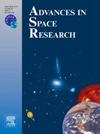A machine learning-based approach for flash flood susceptibility mapping considering rainfall extremes in the northeast region of Bangladesh
IF 2.8
3区 地球科学
Q2 ASTRONOMY & ASTROPHYSICS
引用次数: 0
Abstract
Flash floods are catastrophic global events, especially in northeast Bangladesh, and assessing flash flood susceptibility is crucial for preparedness and mitigation. Traditional geographic system-based flash flood susceptibility mapping struggles to capture flash floods’ non-linear and complex nature. However, machine learning models have recently emerged as an efficient alternative to address these limitations. This study evaluates four machine learning models—Artificial Neural Network (ANN), Recurrent Neural Network (RNN), Random Forest – Gradient Boosting (RFGB) Hybrid, and Categorical Boosting (CatBoost)—for flash flood susceptibility. It categorizes areas into five susceptibility levels: very low, low, moderate, high, and very high. Covering 24,424.25 km2 across eight districts, the study uses 400 points (200 flood and 200 non-flood) for training and validation, based on field investigation, historical flood information, Sentinel-1 SAR GRD: C-band Synthetic Aperture Radar data using Google Earth Engine, and insights from the local people. The models’ predictive performances are evaluated by incorporating topographical attributes and rainfall indices and using accuracy, precision, recall, F1 score, and Receiver Operating Characteristic (ROC) Area Under the Curve (AUC) score, with 70 % of the data for training and 30 % for testing. The ANN model performs best with rainfall indices, achieving high accuracy (maximum AUC = 0.802). The RFGB hybrid model shows excellent training accuracy (AUC ≥ 0.971) but suffers from overfitting during validation (AUC ≤ 0.674), requiring careful hyperparameter adjustment. The CatBoost model effectively uses both rainfall indices and terrain features, achieving AUC = 0.701 in training and AUC = 0.667 in validation. The ANN model conservatively includes the largest area (2198.3 km2) under ’very high’ susceptibility. This study’s flash flood susceptibility maps, which include rainfall extremes, are more robust than those without, helping local administrative authorities and national flood practitioners prepare for flash floods.
求助全文
约1分钟内获得全文
求助全文
来源期刊

Advances in Space Research
地学天文-地球科学综合
CiteScore
5.20
自引率
11.50%
发文量
800
审稿时长
5.8 months
期刊介绍:
The COSPAR publication Advances in Space Research (ASR) is an open journal covering all areas of space research including: space studies of the Earth''s surface, meteorology, climate, the Earth-Moon system, planets and small bodies of the solar system, upper atmospheres, ionospheres and magnetospheres of the Earth and planets including reference atmospheres, space plasmas in the solar system, astrophysics from space, materials sciences in space, fundamental physics in space, space debris, space weather, Earth observations of space phenomena, etc.
NB: Please note that manuscripts related to life sciences as related to space are no more accepted for submission to Advances in Space Research. Such manuscripts should now be submitted to the new COSPAR Journal Life Sciences in Space Research (LSSR).
All submissions are reviewed by two scientists in the field. COSPAR is an interdisciplinary scientific organization concerned with the progress of space research on an international scale. Operating under the rules of ICSU, COSPAR ignores political considerations and considers all questions solely from the scientific viewpoint.
 求助内容:
求助内容: 应助结果提醒方式:
应助结果提醒方式:


